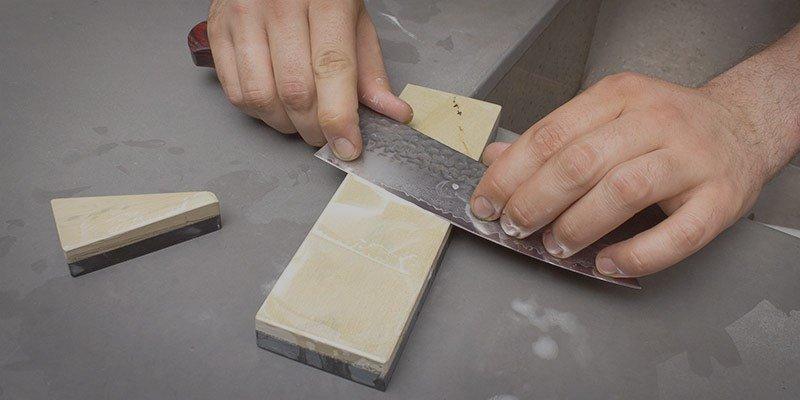
Ever wondered why you need to use a whetstone wet? It turns out that you don’t.
There has been a pervasive myth on a global scale which states that you must use your whetstone wet. This is a legend founded in some truth. As a rule, you do not need to wet your whetstone to use it. In fact, ‘Whet’ is both a noun and a verb. “To whet” means to sharpen a blade as a verb, as a noun it is an archaic – yet still relevant – term. An example of using whet in a sentence might be “The smell of the cooked meats whets their appetites.”
Once you understand that the term is ‘whetstone,’ and not ‘wetstone’ it all starts to make more sense.
Is a Sharpening Stone the Same as a Whetstone then?
Pretty much. Since to whet means to sharpen, a whetstone is another name for a sharpening stone. However, just to add confusion into the mix, we have stones which must be wet before you can use them. Do not fall into the trap of assuming that all sharpening stones need water to operate.
Whetstones and sharpening stones do the same job but are not necessarily natural stones. Many are made from manmade materials, such as compressed aluminum oxides, which help get the level of abrasion needed for a honed blade just right.
Is it Better to use a Whetstone or a Knife Sharpener?
A whetstone is one hundred percent the better kitchen gadget for keeping a blade maintained over time. There are lots of reasons for this, but the main one is the damage that a knife sharpener can do to your blade over time.
Say you work in a kitchen full time, and you sharpen your knife five or six times a day. Using a whetstone, you hone the blade. Using a knife sharpener, you remove whole strips of the metal each time. Use it often enough and you will end up with no blade.
Can you Choose Any Stone as a Whetstone?
Not really. The stone must have enough abrasion in it to do the job, but not enough abrasion to scratch the knife. If you go too far into the abrasive materials list, you end up with a ruined and useless blade. Stick to purpose made whetstones. A man-made mix of compressed metals is the perfect mix.
When Should You Wet a Sharpening Stone?
There are some sharpening stones which do require water or oil to use. This is the root of the legend that you must choose a lubricant for your whetstone. The Japanese have used ‘water stones’ to sharpen blades for centuries now. This is a specific type of porous stone which they harvest for use on blades. These must be fully submerged in water before you can safely use them. There are also other types of whetstones around the globe which require water or oil to help the abrasive material do its job. Stones found in the Arkansas Mountains, for example.
How do you tell which is which?
A rough whetstone is likely to require water where a smooth one is of manmade materials. These smoother stones don’t typically require water. Ideally, you should follow the manufacturer’s instructions for the best results.
Gray Williams
Related posts
Stay connected
Today's pick
- Things to Remember While Designing Your Custom Modular Kitchen in GurgaonGurgaon now known as Gurugram is the second largest city in the state of Haryana and is a reflectiossn of an ideal modern city with futuristic goals. Witnessing rapid urbanization, it has also emerged as a hub for contemporary homes, with homeowners seeking innovative and... The post Things to Remember While Designing Your Custom Modular […]
